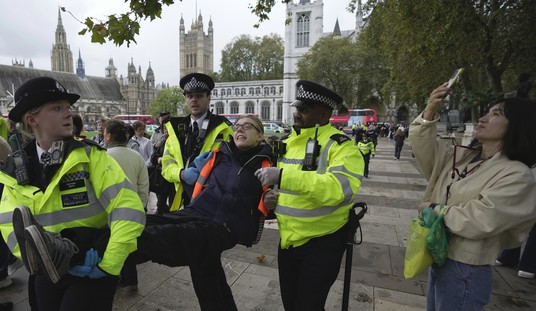Dëvar Torah – Parashath Naso’ (Numbers VI, 21-VII, 89)
This week’s parasha tells us, inter alia, of the voluntary sacrifices offered by the nësi’im, or “presidents” of the tribes, bëyom kalloth Moshe lëhaqim eth haMishkan (“on the day Moshe had finished erecting the Mishkan,” VII.1). The ancient Aramaic paraphrase known as the Targum Yonathan is at some pains to remind us of the actual date: “And it was on the first day of Nisan that Moshe finished erecting the Mishkan,” cf. also Gittin 60a).
This emphasis leads us to note that the episode seems anachronistic. It was, after all, during the census described in the previous parasha — which took place a full month after the raising of the Mishkan — that the nësi’im were appointed (bë’echad lachodesh hashéni bashana hashénith lëtzétham mé’eretz Mitzrayim, “on the first of the second month [i.e., Iyyar] of the second year of their exodus from the land of Egypt,” I, 1).
There, we read that when Moshe and Aharon were to count the bënei Yisra’él, vë’ittëchem yihyu ish ish lamatte rosh lëvéyth avothav hu’. Vë’élle shëmoth ha’anashim asher ya‘amdu ittëchem. (“[A]nd with you will they be, one man from each tribe; a man who is head of his ancestral household. And these are the names of the men who will stand with you.” ibid., 4-5). As Rashi ad loc. describes, this meant that “when you marshal them, the nasi’ of each and every tribe will be with you.” There follows the names of the nësi’im mentioned in our parasha.
If they were indeed not appointed until the census in Iyyar, how did anyone know who the nësi’im were the month before?
The verse quoted above which introduces the sacrifices of the nësi’im raises another question through a midrash cited by Rashi. In order to understand the midrash, it is necessary to bear in mind a convention of Hebrew orthography under which the consonants yud and vav are often utilized to represent long vowel sounds. Words may thus be spelled either malé’ (“full”) with the help of these letters or chasér (“lacking”) these letters. With this in mind, I quote Rashi:
Kalloth is written (he wishes to say with an “a,” and not kloth without an “a”; examine and accept it); on the day of the erection of the Mishkan Israel was like a bride entering under the chuppa.
The words in parentheses were added by a later editor trying to explain the basis of the midrash, but an examination of the passage as it actually appears in primary sources reveals something surprising.
The Minchath Chai, a commentator who tracks the spelling peculiarities of the Masoretic text, notes that it occurs in three different collections of midrashim as well as in four separate places in the Zohar. In all of them (as well as some manuscripts of Rashi), the word kalloth is spelled chasér, lacking the vav (i.e., כלת instead of כלות, as it appears in our text). Indeed, the version in the Midrash Tanchuma concludes by telling us that it is this spelling which underlies the midrash: “Therefore Vayëhi bëyom kalloth is written chasér.”
There is no question the word is properly spelled malé’ in our sifrei Torah, with a vav. Should we encounter a séfer Torah with the chasér spelling, it would be set aside as pasul, “invalid.” So why do the Rabbis of the Talmud seem to insist that the word be spelled in this way?
There is an interesting suggestion in the Zohar. In one of the places in which our passage appears, the Zohar asks the logical question:
If you say that we derive these ideas from these words, how is it possible? For the Rabbis have permission neither to add nor to subtract a letter from the word, i.e. vav, nor to exchange one letter for another. Kalloth is written malé’ in the Torah! Who gave them permission to remove a letter from it? (III, 254a).
To which the Zohar answers that, when it comes to whether words are spelled chasér or malé’:
… and concerning all the interpretations which can be made to adorn a bride with her ornaments, the Holy One, Blessed is He instructs us to do as the Rabbis say and to believe them; that is what is written: ‘al pi haTorah asher yorucha (“according to the Torah which they instruct you,” Deuteronomy XVII, 11; ibid.).
Despite the Zohar’s apparent assertion of a rabbinical right to alter the text of the written Torah (in however limited a way) the fact is that this is not to be taken literally. Indeed the great 16th century halachic authority Rabbi David ben Zimra rules specifically that for this very reason one may not rely upon midrashim to ascertain the correct spelling of words when they seem to contradict what is written in our sifrei Torah (Radvaz I, 101). By what chain of reasoning, then, can the Rabbis have been led to treat the word kalloth even though properly spelled as though it were hasér?
The Massora, that compendium of all the orthographical peculiarities of the written Torah (hence the term “Massoretic text”) tells us that in every place in which the word kalloth appears in the Torah it is written malé’ — save one.
In that verse (Deuteronomy XX, 9) it occurs in conjunction with the word shotërim: Vëhaya këchalloth hashotërim lëdabbér el ha‘am (“And it will be when the shotërim have finished speaking to the people”). The shotërim are the “policemen” of the Torah, enforcers of the Sanhedrin’s decrees who rule those reluctant to comply with rod and strap, as Rashi tells us in his comment to ibid., XVI, 18.
Let us now return to our first question: How did anyone know who was a nasi’ before the census of parashath BëMidbar? The Ha‘améq Davar notes that in fact we find nësi’im mentioned even earlier, at the beginning of the Mishkan’s fabrication (cf. Exodus XXXIV, 31 and XXXV, 27-28). He concludes from this that they were the natural leaders of the people who, led “by the agreement of each tribe that he was the greatest among them, and the Holy One, Blessed is He, agreed at the time of the census that they would oversee the marshaling.”
What characteristics caused the shëvatim so unequivocally to recognize these men as great leaders? The Sifrei tells us the source of their greatness.
They had been shotërim of a different sort, appointed over their fellows by the Egyptian authorities. Presumably they performed to their masters’ satisfaction until, in response to what he saw as an incipient slave revolt at the instigation of Moshe and Aharon, Pharaoh decreed that the slaves no longer be issued the straw necessary to temper their bricks, but be made to gather it themselves while producing the same quota of bricks as before. At first the shotërim tried to do their jobs: Vayétzë’u nogësei ha‘am vëshotërav vayomëru el ha‘am lémor, Ko amar Par‘o Éyneni nothén taven (“And the people’s overseers and shotërim went out and said to the people, Thus said Pharaoh: I am not giving straw….” Exodus V, 10). When the slaves, who had not been underworked before, failed to produce their quota, vayukku shotërei bënei Yisra’él (“And the shotërim of the bënei Yisra’él were beaten,” ibid., 14).
Here is where the transformation occurred. Instead of accepting the beating and passing it on to their hapless underlings, Vayavo’u shotërei bënei Yisra’él vayitz‘aqu el Par‘o lémor, Lamma tha‘ase cho la‘avadecha? Teven éyn nittan la‘avadecha (“And the shotërei bënei Yisra’él came and cried out to Pharaoh, saying, Why do you do thus to your servants? Straw is not given to your servants,” ibid., 15-16).
It was këchalloth hashotërim, by virtue of their ceasing to be enforcers for the Egyptians and becoming advocates for their people, that the men who later became the nësi’im earned the love and respect of Israel and came to be looked upon as leaders. It was their enthusiasm and zeal for sacred things (cf. Even ‘Ezra to Exodus XXXV, 28, where he considers it a great thing that the nësi’im had preserved pure olive oil for holy purposes even so many months after leaving Egypt), their leadership by example in donating materials for the Mishkan and then voluntarily bringing expensive sacrifices at its dedication which led up to Israel’s becoming, as it were, Ha-Shem’s bride.
This, in my humble opinion, is what motivated the Rabbis to look at that other, seemingly unrelated phrase in Deuteronomy and to treat the word kalloth in our parasha as though it, too, were spelled chaser. They wished to show off the bride’s “ornaments,” these leaders who had arisen from the people and inspired Israel to spiritual greatness.
Yet another midrash (BëMidbar Rabba XII, 26) tells us that Moshe was initially reluctant to accept the offerings of the nësi’im . They had not been commanded to bring them. Also, the lesson of Nadav and Avihu was still very fresh in his mind, especially in light of the qëtoreth, the incense which each of them brought, the very thing which had been the downfall of Aharon’s sons. He only relented, says the midrash, when assured by G-d of the purity of their intent.
Such are the true leaders of Israel.









Join the conversation as a VIP Member